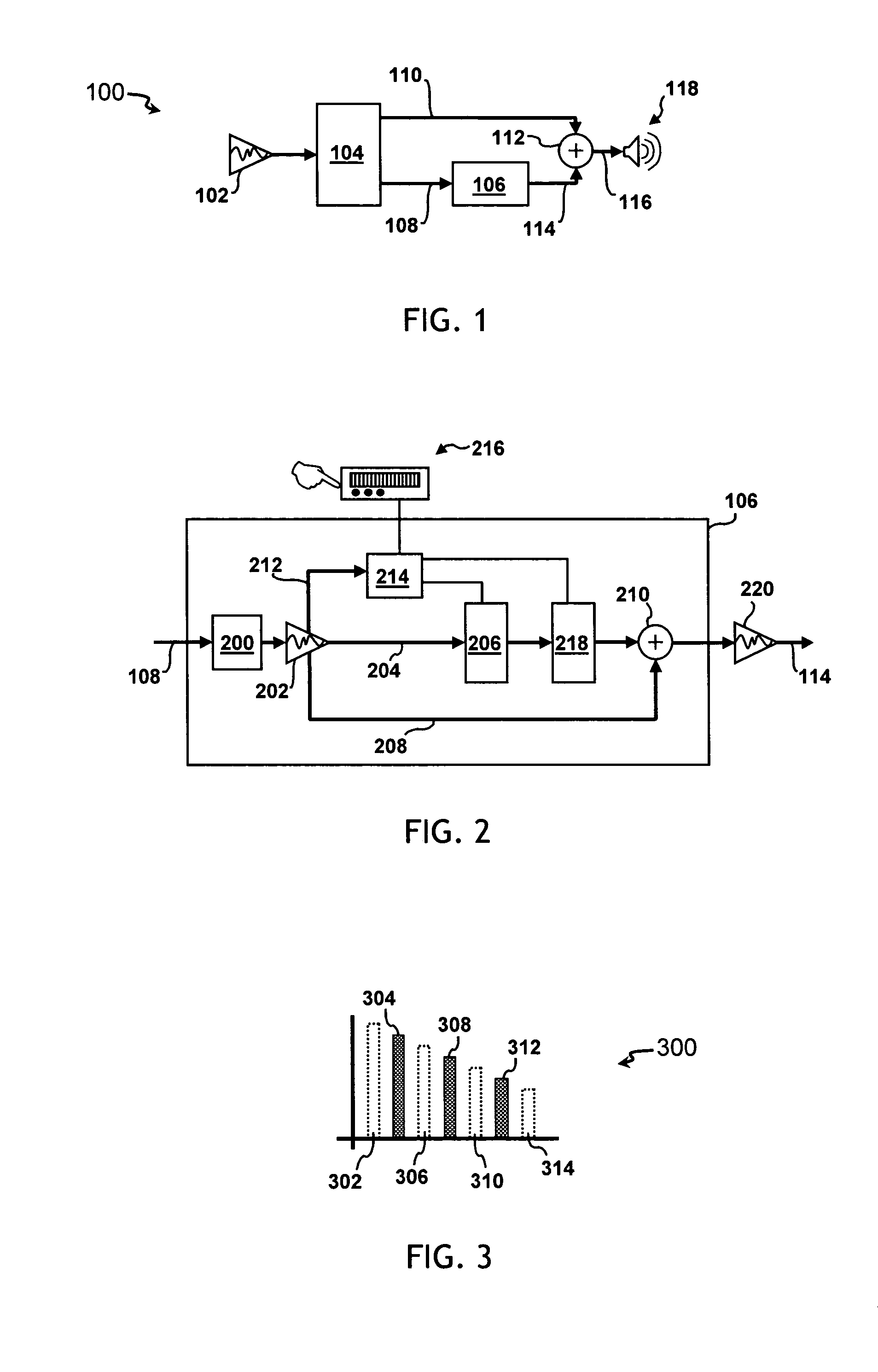Versatile system for processing digital audio signals
a digital audio and audio signal technology, applied in the field of digital audio signal processing, can solve the problems of increasing the cost, aesthetically, less than pleasing playback or reception signal, lack of richness and depth of fully analog signal, etc., and achieves the effect of advancing digital audio signal, high versatility and adaptability, and efficient and commercially viabl
- Summary
- Abstract
- Description
- Claims
- Application Information
AI Technical Summary
Benefits of technology
Problems solved by technology
Method used
Image
Examples
Embodiment Construction
[0018] While the making and using of various embodiments of the present invention are discussed in detail below, it should be appreciated that the present invention provides many applicable inventive concepts, which can be embodied in a wide variety of specific contexts. The present invention will now be described in conjunction with the modification of digital audio signals. The present invention provides a versatile system that provides highly efficient end-user modification of a digital signal, particularly digital audio signals. Although the present invention is hereinafter described in reference to aesthetic alteration of a digital audio signal, the principles and teachings of the present invention are readily adaptable to other signal processing applications. The specific embodiments discussed herein are merely illustrative of specific ways to make and use the invention and do not limit the scope of the invention.
[0019] The present invention defines a system that aestheticall...
PUM
 Login to View More
Login to View More Abstract
Description
Claims
Application Information
 Login to View More
Login to View More - R&D
- Intellectual Property
- Life Sciences
- Materials
- Tech Scout
- Unparalleled Data Quality
- Higher Quality Content
- 60% Fewer Hallucinations
Browse by: Latest US Patents, China's latest patents, Technical Efficacy Thesaurus, Application Domain, Technology Topic, Popular Technical Reports.
© 2025 PatSnap. All rights reserved.Legal|Privacy policy|Modern Slavery Act Transparency Statement|Sitemap|About US| Contact US: help@patsnap.com


